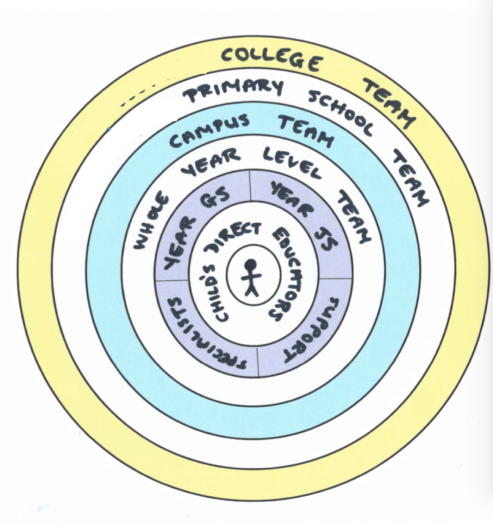Once upon a time in the olden days, the teacher stood out front and taught the whole class the same material in the same way. Everyone was expected to do the same tasks, some passed and some failed and were labelled ever after. The focus was on teaching, not on learning. One size was supposed to fit all and if you learned in a different way, too bad for you.
Time passed and it turned out that everyone didn’t learn in the same way after all. The teacher realised that learners have different needs, interests and abilities. Differentiated instruction was invented. The teacher prepared different tasks for each group in her class and preparation now took a whole lot longer. The needs of the learner were being better catered for, but the teacher was up all night.
She needed to think about differentiation in a different way.
10 ways to differentiate learning…
1. Let go.
Give the students (at least some) ownership of their learning. Don’t always be the boss of the class, be part of the community of learners. Don’t make all the decisions. Allow choice. Encourage students to think about how they learn best. Have students decide how to demonstrate their learning.
2. Change your expectations.
One size does not fit all. Not everyone fits the traditional mould of school, but that doesn’t mean they can’t learn. You might need to change what you do. Remember you teach people, not subjects.
3. Change the sequence.
Learners don’t need total mastery of all the skills before they can apply them. Provide meaningful, authentic learning opportunities for everyone. Turn Bloom’s taxonomy on its head. All students can solve real problems and write for a real audience.
4. Use technology creatively.
Blogging, film making, global interactions, social media, photography, gaming (and much more!) …all provide naturally differentiated opportunities for learners with varied levels of ability, different interests and special talents.
5. Care about what matters to them.
Encourage learners to follow their interests. Know their story. Make their learning relevant. Connect with their passions… or help them to discover what they might be.
6. Assess for learning.
It’s not about a test at the end. Record student thinking and track development over time. Create meaningful assessment tasks that allow transfer of learning to other contexts. Think of everything as an assessment. Every piece of work, every blog post, every interaction, every conversation can tell us where a learner is at and where they need to go.
7. Embrace inquiry as a stance.
Create a culture of thinking, questioning, wondering and exploring. Start your questions with ‘What do you think?’ so that all responses are acceptable. Find ways to provoke learners’ curiosity and a desire to find out for themselves.
8. Don’t be the only teacher.
Students can learn from their peers, other teachers, parents, their on-line contacts, the world. Help them build their own personal learning network with and from whom they can learn.
9. Focus on learning, not work.
Make sure you and your students know the reason for every learning experience. Don’t give ‘busy work’. Don’t start by planning activities, start with the ‘why‘ and then develop learning experiences which will support independent learning.
10. Encourage goal setting and reflection.
Help students to define goals for their learning. Provide opportunities for ongoing self-evaluation and reflection. Provide constructive, specific feedback. Student blogs are great tools for reflecting on learning and responding to their peers.
If you’re the teacher in the story above, take a look at this chart, highlighting the differences between differentiated instruction and personalised learning. Personalization vs Differentiation vs Individualization by Barbara Bray.

